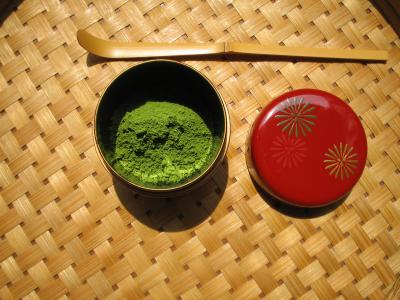Cha no yu or sado or tea cult is the traditional Japanese way of drinking tea in accordance with set rules of etiquette (Aoto, 1984: 239). Both the host and guests share a sense of togetherness during the ceremony. The "etiquette" of the tea ceremony concerns the manner in which the host serves the guests fine aromatic tea in a traditional tea cup in exquisite beauty and the manner in which guest show their appreciation to the host in the way they accept the tea. Kakuzo Okakura perceived cha no yu as "the way of tea".
 |
| Source |
Cha no yu is the principles of:
- Wa: harmony
- Kei: respect
- Sei: purity
- Jaku: tranquility
This is the equipments of Cha no yu:
Chakin (茶巾)
The "chakin" is a small rectangular white linen or hemp cloth mainly used to wipe the tea bowl.
 |
| Source |
Tea bowl (茶碗 chawan)
Tea bowls are available in a wide range of sizes and styles, and different styles are used for thick and thin tea. Shallow bowls, which allow the tea to cool rapidly, are used in summer; deep bowls are used in winter. Bowls are frequently named by their creators or owners, or by a tea master. Bowls over four hundred years old are in use today, but only on unusually special occasions. The best bowls are thrown by hand, and some bowls are extremely valuable. Irregularities and imperfections are prized: they are often featured prominently as the "front" of the bowl.
 |
| Source |
Tea caddy (棗 natsume)
The small lidded container in which the powdered tea is placed for use in the tea-making procedure ([お]手前; [お]点前; [御]手前 otemae)
Tea scoop (茶杓 chashaku)
Tea scoops generally are carved from a single piece of bamboo, although they may also be made of ivory or wood. They are used to scoop tea from the tea caddy into the tea bowl. Bamboo tea scoops in the most casual style have a nodule in the approximate center. Larger scoops are used to transfer tea into the tea caddy in the mizuya (preparation area), but these are not seen by guests. Different styles and colours are used in various tea traditions.
 |
| Source |
Tea whisk (茶筅 chasen)
This is the implement used to mix the powdered tea with the hot water. Tea whisks are carved from a single piece of bamboo. There are various types. Tea whisks quickly become worn and damaged with use, and the host should use a new one when holding a chakai or chaji.
 |
| Source |
Before the host gives the guest the tea, they will ask the guest to eat okashi or sweets or cakes that have very sweet taste. They're for neutralize the bitterness of the tea.
See the video about the cha no yu process.
I've once attend a cha no yu too at my University. But it wasn't at chashitsu or the room for cha no yu, it was at my class.
 |
| "Okashi" |
Source:
Aoto, Yasuo. 1984. Nippon: The Land and Its People. Tokyo: Nippon Steel
Okakura, Kakuzo. 2005. The Book of Tea: The Classic Work on the Japanese Tea Ceremony and the Value of Beauty. Tokyo: Kodansha International
Okakura, Kakuzo. 2005. The Book of Tea: The Classic Work on the Japanese Tea Ceremony and the Value of Beauty. Tokyo: Kodansha International
Wikipedia
Youtube





1xbet korean – Soccer Betting in KR | Legalbet.co.kr
BalasHapusSoccer 1xbet korean Betting in KR · 1xbet korean · 1xbet korean · 1xbet korean · 1xbet korean · 1xbet korean · 1xbet korean · 1xbet korean · 1xbet korean · 1xbet 샌즈카지노 korean · 1xbet kadangpintar korean.